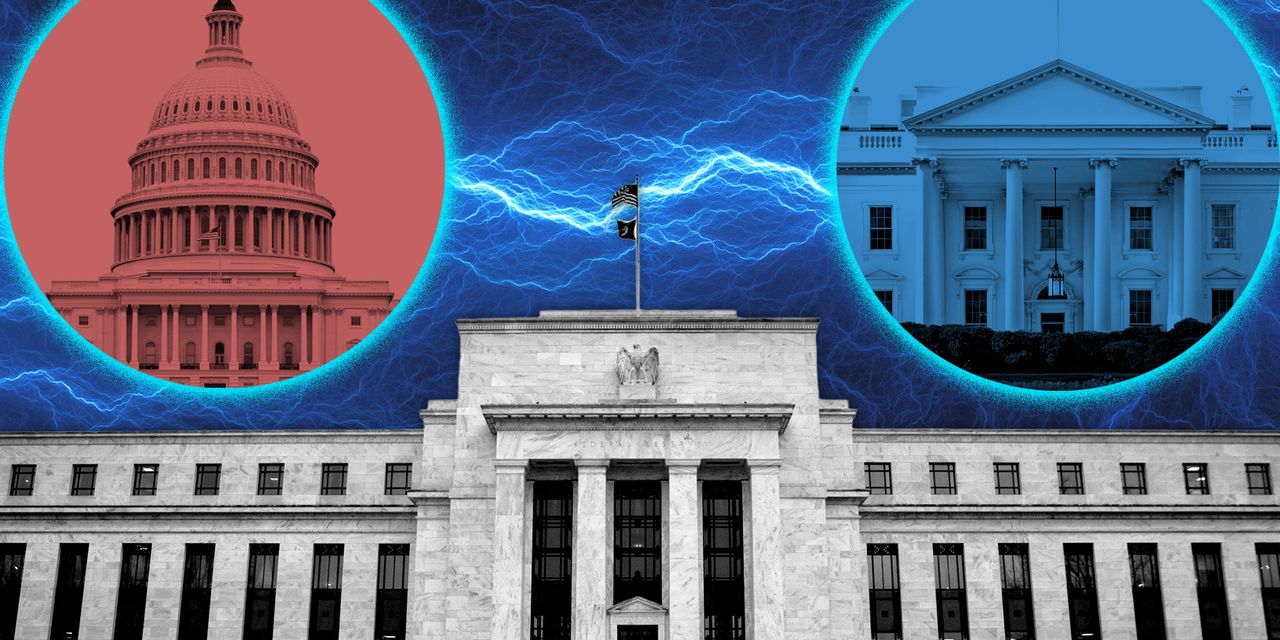Financial markets outside the Treasury-bill sector were taking a bit of a break from debt-ceiling angst on Thursday, with stock investors mostly focused on a blowout revenue outlook from Nvidia and bond traders looking to the likelihood of at least one more Federal Reserve rate hike by July.
With many market participants confident that a debt-ceiling pact can be reached next week, analysts said there’s yet another scenario that might unfold: A prolonged debt-ceiling battle that stretches into the Fed’s June 13-14 meeting in Washington.
At the heart of their thinking is the idea that the “X-date,” or when the government could fall short on funding without a debt-limit deal, might be more fluid than thought. Treasury Secretary Janet Yellen has repeatedly cited June 1 as the earliest that her department might not be able to pay all its bills, though Republicans are skeptical of that timetable. Some economists, such as Derek Tang of Monetary Policy Analytics and Paul Ashworth at Capital Economics, see reasons to think that the actual X-date could arrive later next month.
“It’s possible that negotiators in Washington will still be talking about the debt ceiling in a couple of weeks, and Treasury has some tools it can use to fudge the X-date if necessary,” said Bill Adams, chief economist for Comerica Bank in Dallas.
Republicans and Democrats are angling over whether to include spending cuts in any bipartisan agreement to raise the U.S.’s $31.4 trillion debt ceiling. The statutory borrowing limit was reached in January, prompting Treasury to take extraordinary measures in the meantime. Republicans want spending cuts in exchange for a deal, while Biden and other Democrats are against that and favor a “clean” debt-limit increase.
Under a scenario in which there’s no deal by mid-June and the U.S. hasn’t yet defaulted, “I think, counterintuitively, that the Fed will still hike if the inflation outlook justifies hiking in June,” Adams said via phone on Thursday.
“In the past, debt-ceiling negotiations haven’t had a meaningful impact on the economy over the time frame that the Fed cares about, which is six to 18 months down the road,” he said. “I wouldn’t expect that to stop them. The only thing that would change that is if the situation deteriorates into an outright crisis that causes major disruptions in the financial system and a big drop in business and consumer sentiment.”
As of Thursday, both sides of the debt-ceiling fight were putting a positive spin on the negotiations, with President Joe Biden and House Speaker Kevin McCarthy both emphasizing the progress that’s being made. U.S. stocks
DJIA,
SPX,
COMP,
finished mostly higher, as did Treasury yields. Meanwhile, fed funds futures traders priced in a 48% chance of a quarter-point rate Fed hike in June and, assuming that takes place, a 22.7% likelihood of similar move in July.
Debt-ceiling angst has largely been contained to the T-bills sector, where rates on bills maturing from June 1-8 hovered between 6.74% to 6.86% earlier in the day, according to Tradeweb.
Tang of Monetary Policy Analytics, a Washington-based firm that works with hedge funds and global banks, said the research firms he speaks to are coalescing around an X-date that lands somewhere “in the first half of June.” He said there is “absolutely” a risk that there may be no debt-ceiling deal in place by the time the rate-setting Federal Open Market Committee convenes in Washington, though his base-case view is that there will be.
The minutes of the Fed’s May 2-3 meeting, released on Wednesday, also mention the possibility that the actual X-date might come “a number of weeks” after June 1.
At Capital Economics, Ashworth, chief North America economist, said the standoff in Washington “will probably now drag on into early June,” though he added some caveats to that statement. “If the Treasury makes it through the first two days of next month, it will be close to broke and a payment could be missed at any time,” he wrote in a note on Thursday.
“That said, if — by some small miracle — it can somehow make it to June 15, quarterly tax revenues due that day — of close to $100 billion — would ease the pressure and, in all likelihood, the Treasury would then make it to June 30, when it can access close to $150 billion in additional extraordinary measures,” Ashworth said.
“The upshot is that, if the Treasury can make it through the first half of June, it would probably not run out of money again until late July or even early August. But that’s an increasingly big if.”
If the debt-ceiling issue is still not resolved by June 13-14, and the U.S. hasn’t yet defaulted on its obligations, the Fed might be inclined to skip a rate hike at next month’s meeting, even if inflation and other economic data are strong enough to justify another move, “given the potential downside risks to the economy, not knowing the problems that a potential default could unleash,” said Scott Buchta, head of fixed income strategy for Brean Capital in Franklin, Tennessee.
“You hope it wouldn’t go that far, but at this point you really can’t rule anything out,” Buchta said via phone. “You almost have to figure a small probability for a lot of different scenarios.”
Read the full article here







